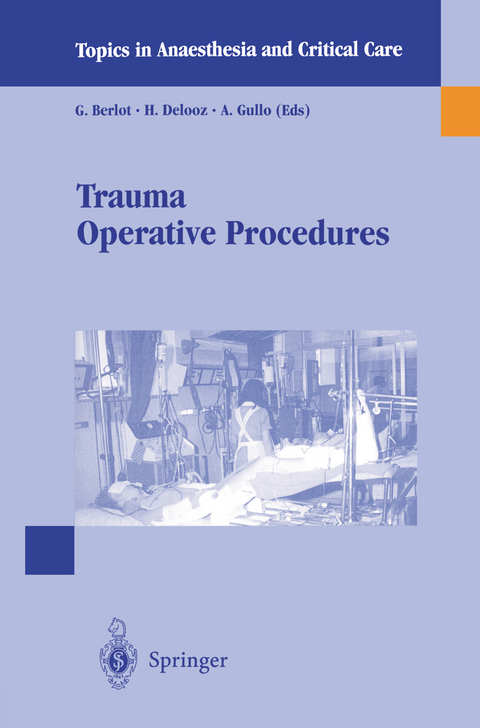
Trauma Operative Procedures
Springer Verlag
978-88-470-0045-2 (ISBN)
1 - Planning, organisation, education, triage and research in immediate medical care: an introduction.- 2 - Current trauma scoring systems and their applications: a review.- 3 - Assessing the severity of trauma and the quality of trauma care.- 4 - Trauma transport.- 5 - A pre-hospital pharmacological review.- 6 - Haemorrhagic shock: pathophysiology and treatment.- 7 - Fluid management in trauma.- 8 - Hydroxyethyl starch and coagulation.- 9 - Colloid-induced renal complications.- 10 - Airway management.- 11 - Thermal homeostasis in trauma patients.- 12 - Prevention and management of pulmonary inhalation.- 13 - Vasopressors and inotropes in trauma: when, where, how long.- 14 - Creating a trauma anaesthesia service.- 15 - Anaesthetic implications of drug abuse in trauma patients.- 16 - Common PACU problems in trauma patients.- 17 - Three-in-one block as locoregional analgesia for hip fractures.- 18 - Recommendations for blood transfusion in trauma patients.- 19 - Update on cardiopulmonary resuscitation: guidelines for volunteers.- 20 - Guidelines on trauma management.- Main symbols.
| Erscheint lt. Verlag | 1.11.1998 |
|---|---|
| Reihe/Serie | Topics in Anaesthesia and Critical Care |
| Zusatzinfo | 3 Illustrations, black and white; XI, 209 p. 3 illus. |
| Verlagsort | Milan |
| Sprache | englisch |
| Maße | 155 x 235 mm |
| Themenwelt | Medizin / Pharmazie ► Medizinische Fachgebiete ► Anästhesie |
| Medizin / Pharmazie ► Medizinische Fachgebiete ► Notfallmedizin | |
| ISBN-10 | 88-470-0045-9 / 8847000459 |
| ISBN-13 | 978-88-470-0045-2 / 9788847000452 |
| Zustand | Neuware |
| Haben Sie eine Frage zum Produkt? |
aus dem Bereich


